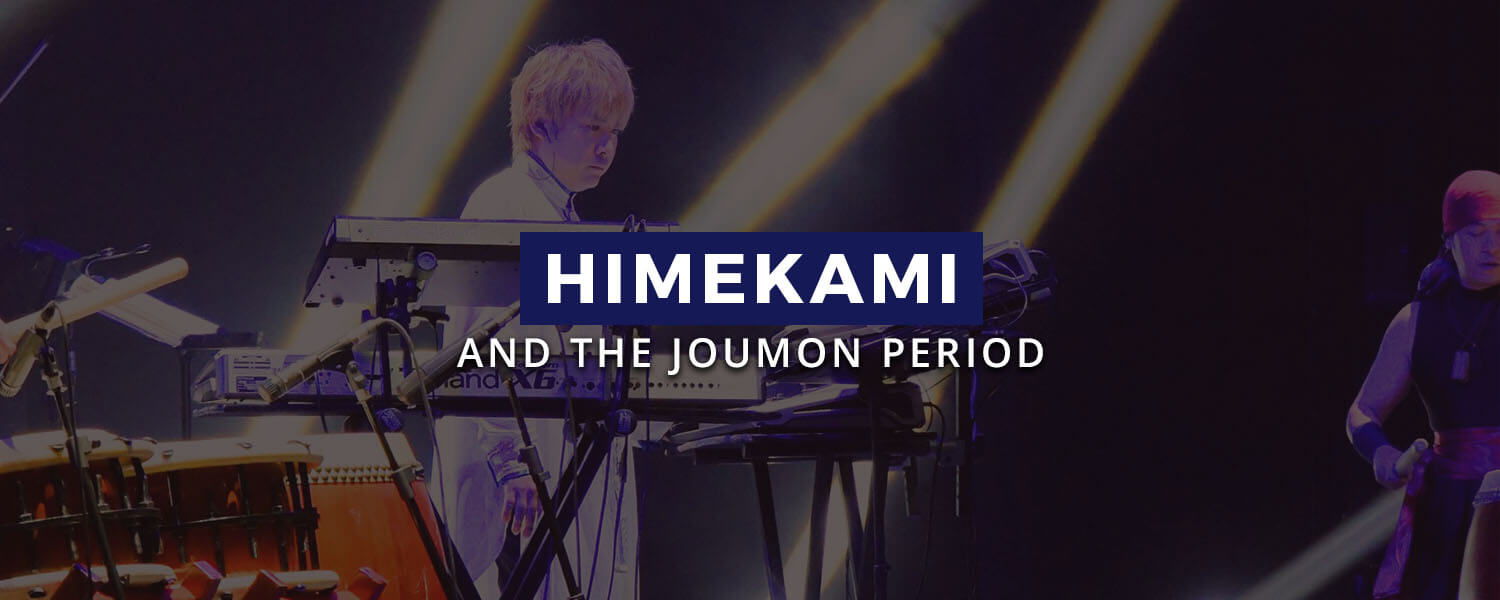KWEH!
I am back with another introduction post. This time, I am writing about a Japanese New Age musical group named Himekami. I will also be talking about the Joumon period because of the band’s relation to the era. To top it all off, I have put together a selection of relaxing Himekami. Are you ready to chill out with me?
History
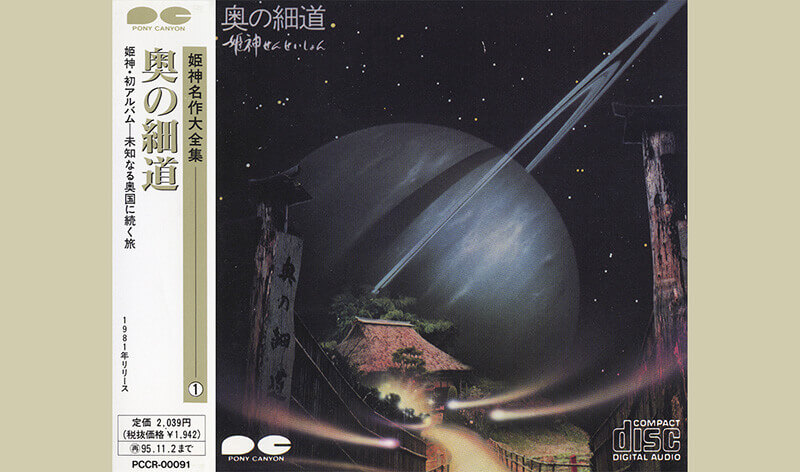
Himekami started as Himekami Sensation (姫神せんせいしょん) in 1980. The late Yoshiaki Hoshi (星 吉昭, Hoshi Yoshiaki), who died in 2004, founded the group. The band changed its name to Himekami (姫神) in 1984 and is still active. Unfortunately, their official website directs you to a few of their other pages. I found that the band is quite active on their Facebook page that you can visit here.
Yoshiki Hoshi (星吉紀, Hoshi Yoshiki) took over his for father, Yoshiaki, as the leader after the latter’s death.
The band’s name was taken from Mount Himekami located north of Morioka City in the Iwate Prefecture. The prefecture itself holds a significant history that I will get into in a moment.
Himekami is known for singing in the supposedly ancient Joumon period language. So, let’s learn more about that era, shall we?
The Joumon period
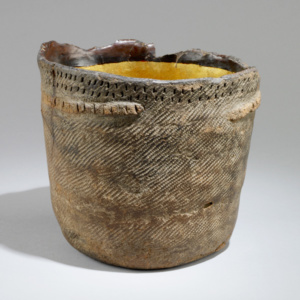
The Joumon (縄文) period is named for the signature patterns often found on the pottery from the time. The name Joumon means “cord-impressed pattern,” signifying that the impressions on the pottery were created by pressing small ropes against the wet clay before firing.
Evidence of the people living during that time period can be found around the northeastern side of the Honshu. The island, if you do not already know it, is the biggest island in the Japanese archipelago. The Iwate Prefecture is host to some of the settlement sites from the Joumon era. The Goshono Site, one among several others, created a museum to educate people about the Joumon period and the importance of the site itself. The earliest found pottery of the civilization dates back to around 14,000 BC. As such, experts think the period had thrived around 14,000 – 300 BC.
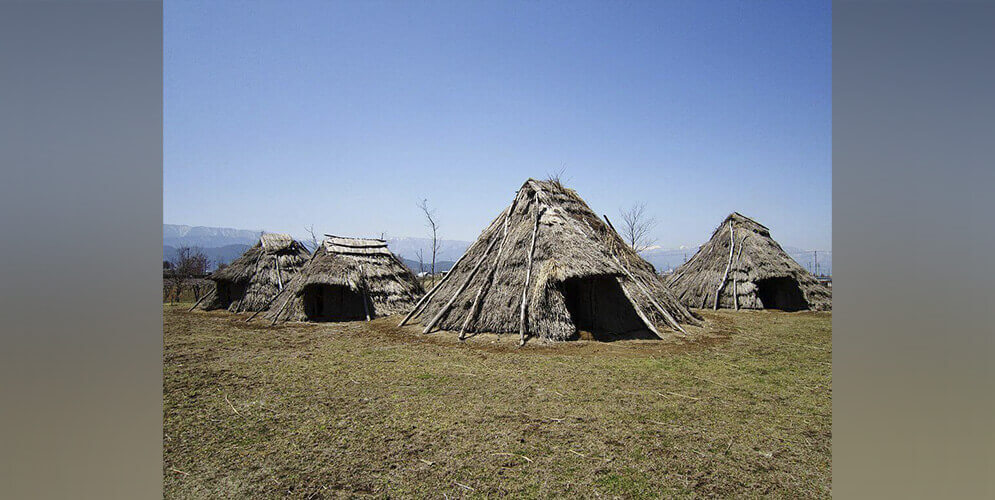
Archeologists speculate people that lived during the time period depended on gathering, fishing, and hunting for food.
Some scholars found heritage and linguistic links between the descendants of the Joumon period and the Ainu people. It might not be far off to trace what remains of the Joumon language to the Ainu one. Though, due to distance and the unavailability of research materials, I may never find out how Himekami is able to use the language. Now, let’s move onto the song selections and get ready to chill.
“Evening Poem”
Let’s start with something soothing. “Evening Poem” is one of the songs included on the 1989 album Moonwater. It sounds quite meditative and is very suitable as background music when you are working on something. I love hearing the bamboo (quite possibly angklung, traditional Indonesian percussion) instruments playing during the later half of the song.
“Ai wo Koete”
Gensou Suikoden III opening. “Ai wo Koete” translated as “Exceeding Love” or “Transcending Love”
This is my inspiration for writing this article. In the early 2000s, I played Suikoden III on my PS2. I immediately fell in love with the opening song that accompanies the intro animation. Thanks to the many different sources on the internet, I was able to track down and learn about Himekami.
Unlike the other relaxing compositions they have done, this one feels quite different. It is a little more epic and upbeat.
“Hitakami no Akatoki”
Hitakami no Akatoki (日高見の暁 or translated as “Hitakami’s Dawn”) starts slightly more melancholic or somber than the songs above. The beat picks up somewhere in the middle, though the sadder melodies are still present. Further digging around suggests 日高見 (Hitakami) is a reference to 日高見の國 (Hitakami no Kuni), a lesser-known and very old name for the regional Japan.
Himekami with YAS-KAZ – “Kaidou wo Yuku (Part 1)”
In 1985, Himekami collaborated with an artist named Yas-Kaz for an album titled Kaidou (海道). The album, as far as I can tell, is the soundtrack to an NHK TV program named Gurutto Kaidou 30,000 Kiro (or translated as Around Hokkaido 30,000 Kilometers). “Kaidou wo Yuku” (海道を行く loosely translated as “Go to Kaidou/Hokkaido”) is a relaxing entry to the album and the TV program. It sets up the feeling and premise of a tranquil and pleasant journey. An interesting note to the name: “Kaidou wo Yuku (Part 1)” does have a second part. “Kaidou wo Yuku (Part 2)” is the last song in the album and may have been used as the closing piece. However, the kanji for kaidou is written as 街道 meaning “highway.” I am curious why the song is named as such.
“Shining Future” with Origa
This song is one of Himekami’s first collaborations with the late Origa. It was included in the album that came out in 2011. Origa’s signature soothing voice blends really well with Himekami’s composition. Himekami produced the album with a collaboration from KAGAYA, a Japanese digital illustrator known for his celestial-themed works. You can see more of his beautiful illustrations on his own website.
I hope you have had some de-stressing moments listening to their songs. Their latest compilation album, “Himekami – Chronicle Best” came out in 2014 and you can purchase it via CD Japan.
Buy the album here
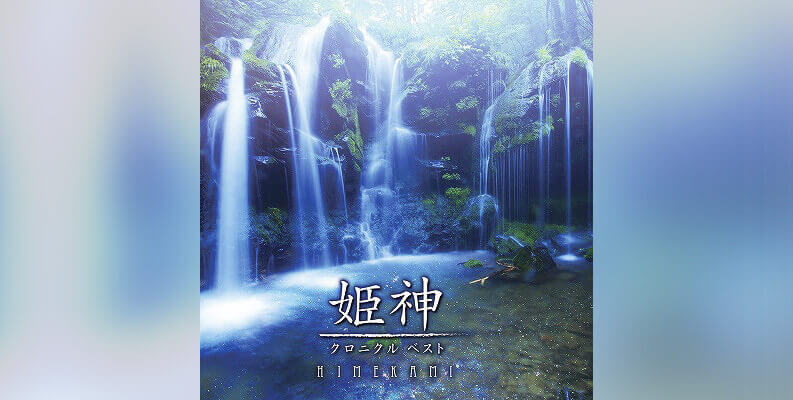
Sources: Wa-Pedia, Met Museum (Jomon Culture), East Wind from Japan (Interesting Japanese Words), All Music (Yas-Kaz), Wikipedia (Jomon Period), and Wikipedia (Japanese People’s Origin).

Featured Sponsor - JAST
The sweetest romance and the darkest corruption, the biggest titles and the indie darlings; for visual novels and eroge, there's nowhere better.
Big thank you to our supporters
From their continous support, we are able to pay our team for their time and hard work on the site.
We have a Thank-You page dedicated to those who help us continue the work that we’ve been doing.
See our thank you page